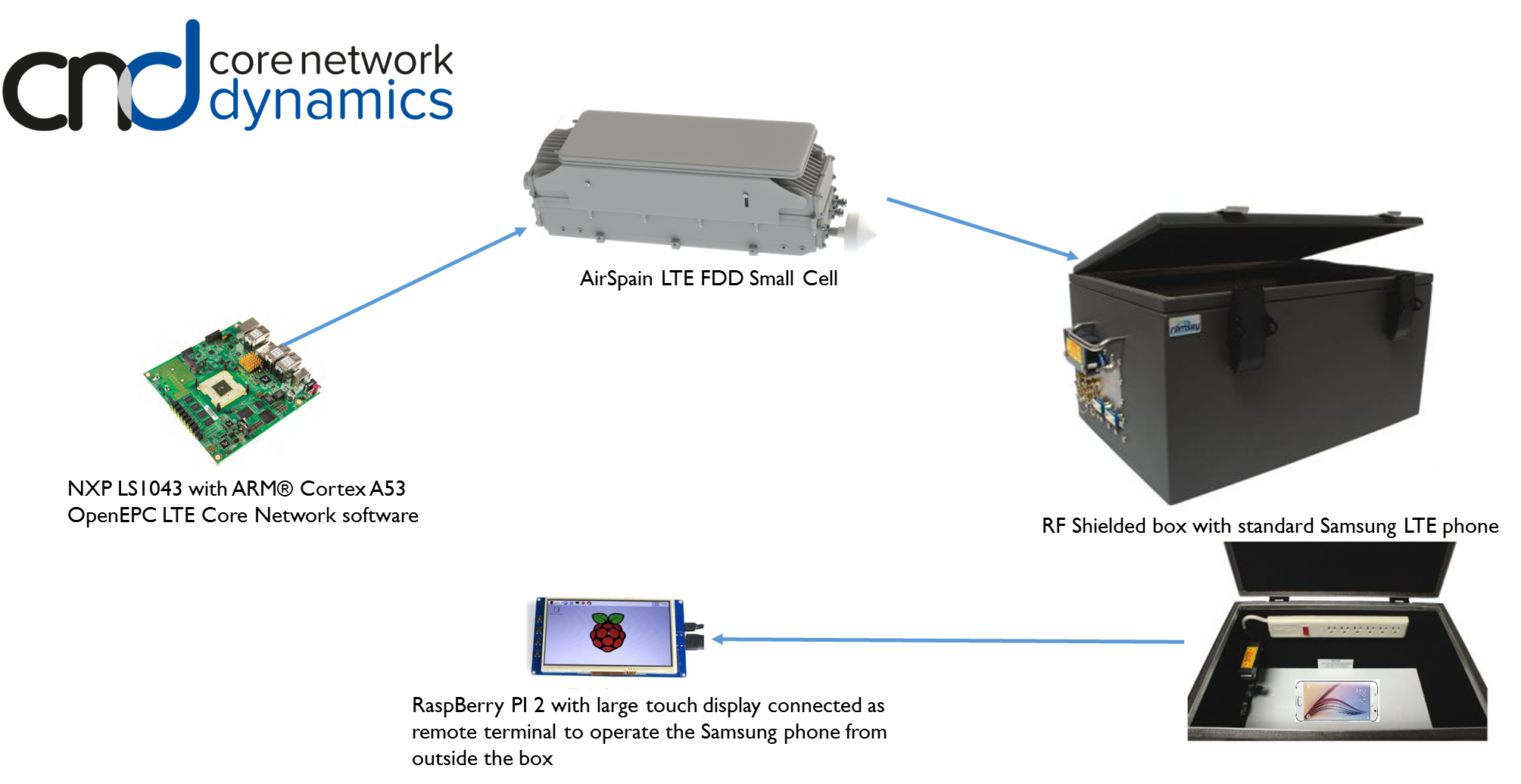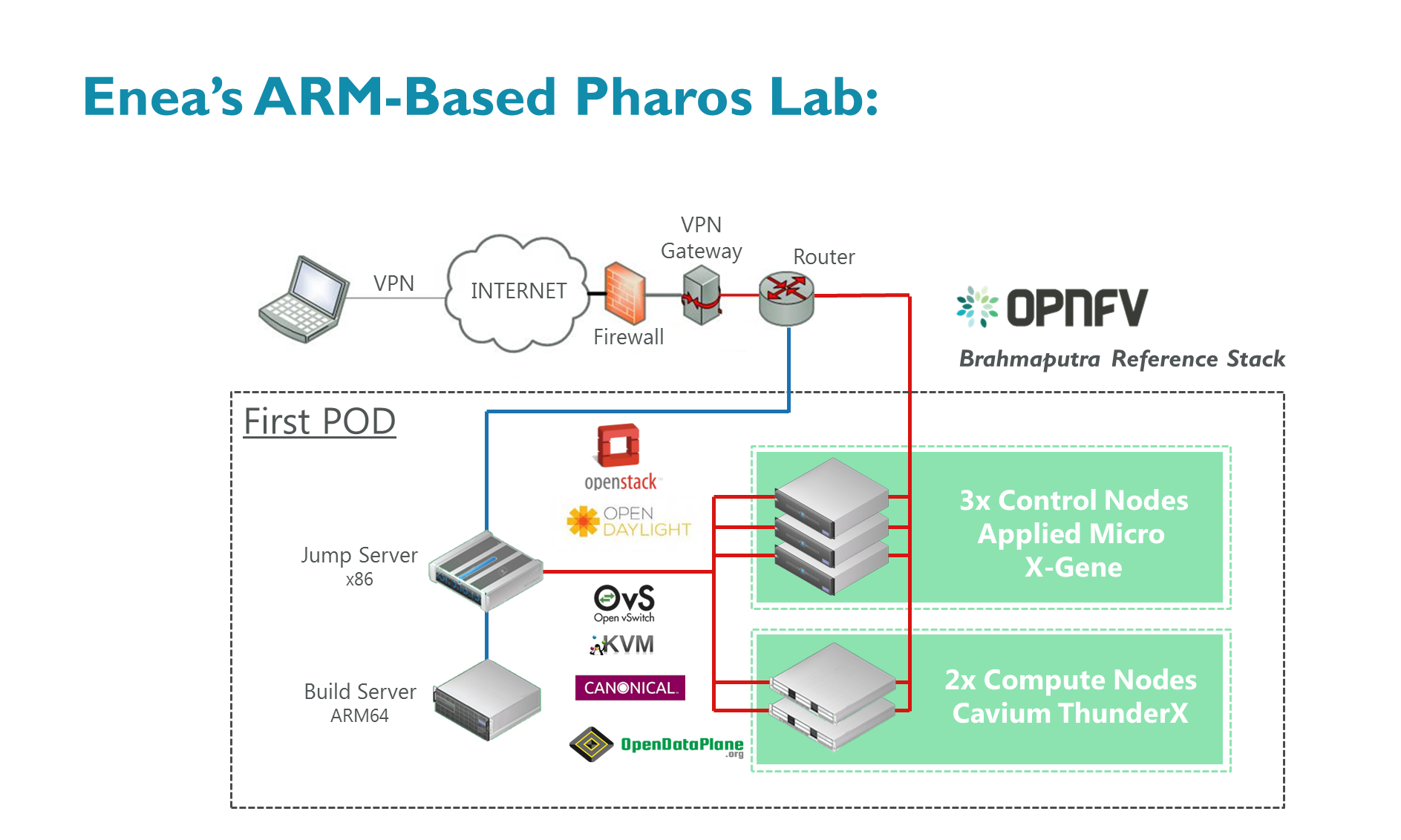2 examples show growing momentum for Arm-based networking
You may have assumed that Mobile World Congress is an event that is entirely dedicated to the smartphones and devices that have changed our lives over the past couple of decades.
By Eoin McCann

You may have assumed that Mobile World Congress is an event that is entirely dedicated to the smartphones and devices that have changed our lives over the past couple of decades. However, in amongst the new and shiny gadgets there is also a lot of exhibition real estate dedicated to the back-end of what makes the modern day mobile experience what it is today (Check out my review of the show here: 6 Takeaways from Mobile World Congress). While new devices such as the Samsung Electronics Galaxy S7 take the headlines, the user experiences the extra processing power on state-of-the-art phones is only as good as the mobile network doing the heavy lifting of connecting devices to the Internet.
The ARM® booth at MWC showed some example demonstrations of how the world’s #1 computing ecosystem has come up with solutions that are enabling network equipment providers and OEMs a new way to think about how they test and deploy networking infrastructure.
Cost-effective Mobile Networks
There is a massive presence at MWC from the telecommunications industry who are trying to solve a number of challenges around mobile connectivity, amongst others a cost-effective way of increasing network coverage geographically. Enter Core Network Dynamics (CND), a startup from the Fraunhofer FOKUS institute in Germany, which is researching and providing the technology to shape mobile networks for 4G and beyond.
Their demonstration was to show CND’s OpenEPC (Evolved Packet Core) software running in a compact server with minimal footprint powered by an NXP LS1043 implementing a complete LTE core network.
For this, ARM showed a real LTE small cell from AirSpan connectecd to a RF shielded box, inside of which sits a Samsung Galaxy phone with a CND SIM Card. The box blocks out all wireless networks except for the LTE network coming from the AirSpan cell.
As the box needs to remain sealed, the phone can be operated through a Raspberry Pi 2 outside of the box, which is acting as a remote console (with a large display).
During the demo, the phone is switched from airplane mode into connected and discovers the test LTE network inside the box. The telephone connects and is operated from the outside to start any standard service from the Internet via the OpenEPC.

The OpenEPC software on the NXP board with the ARM processor is a complete mobile core network. EPC, or Evolved Packet Core, is a novel network architecture that combines the advantages of previous generation mobile network solutions with cost-cutting wireless environments such as WiFi or WiMAX.
The NXP LS1043 utilizes a quad-core ARM Cortex®-A53 processor connected by the CoreLink™ CCI-400 cache coherent interconnect. This powerful combination enables the networking SoC to deliver up to 10Gb/s performance with minimal CPU overhead.
 Having the complete core network running in a compact server with a small footprint and high performance enables decentralizing and distributing core networks to handle the increase in load that 5G and Internet of Things bring, thus taking us one step closer to the vision of the Intelligent Flexible Cloud. As CND’s CEO Carsten Brinkschulte stated, “By distributing the core network and deploying at the edge (Mobile Edge Computing) or even running it on the processor of the small cell – we can avoid the round-trips to the central core network and the backhaul traffic associated with that.”
Having the complete core network running in a compact server with a small footprint and high performance enables decentralizing and distributing core networks to handle the increase in load that 5G and Internet of Things bring, thus taking us one step closer to the vision of the Intelligent Flexible Cloud. As CND’s CEO Carsten Brinkschulte stated, “By distributing the core network and deploying at the edge (Mobile Edge Computing) or even running it on the processor of the small cell – we can avoid the round-trips to the central core network and the backhaul traffic associated with that.”
Breaking down barriers for optimized network infrastructure
The real significance of this demo is that it shows how you can take a generic piece of hardware and run any piece of software on it that you wish to run the network. By providing standardized hardware that can run different software stacks, it allows multiple software vendors to develop software that can run networking workloads for specific use cases. This means that OEMs and network providers can mix and match HW and SW to suit differing requirements, not only reducing costs but allowing them to customize network base stations for different geographies. With the amount of ARM partners in the ecosystem that will potentially develop on this foundation, the choice for OEMs can only increase to suit their target applications.
In this example the prospect of a decentralized network also has its benefits in terms of reliability, increased coverage and unlocking new use cases. Resiliency and fast recovery are indispensable for a public safety communications network carrying mission-critical voice, video and data. A wider distribution of edge stations ensures that one component’s failure has no impact on service to the user. You can learn more about the benefits of decentralized networks here (Link).
Testing lab for next generation of equipment

One of the issues with the design and ordering of infrastructure equipment is that the variety of boards and software stacks can leave OEMs wondering whether their choice is the perfect mix for their needs.
The software company Enea demonstrated an OPNFV lab at the ARM booth, designed for hosting continuous integration, deployment, and testing of the OPNFV platform. As in any data centre there is a control node and a compute node, in this case the AppliedMicro X-Gene and Cavium ThunderX respectively, that do the heavy processing.
It’s a demonstration of a cloud-based sandbox for developers to run their particular software flow on the different types of server stacks they have in the lab. A user connects to the reference stack, codenamed Brahmaputra after the Indian river, and runs the code through the lab. The software can come from any one of the variety of vendors that are built upon the OPNFV platform, including Openstack, Canonical and KVM.
One benefit of what was demonstrated is that network providers can now run their own lab tests for workloads that are important to them on the different hardware that is included here. The real life ‘try before you buy’ allows providers to know exactly what kind of performance they can expect, and deploy systems that are optimal for the workloads they need.
When speaking to Enea's senior systems architect Joe Kidder, he explained that the benefits of a lab like this aren’t reserved for only deciding on the right hardware setup. “Indeed, companies are able to plug their server stacks into the lab even after it has been setup. It is great news for chipmakers targeting this end of the market as it means they can quickly begin running benchmarks in evaluations.
“Some companies will use a lab like this to run tests on their key workloads, while others will get value from renting out their lab space to potential users.”
The future of mobile networks is likely to be ARM powered
The unsung hero of the mobile revolution is the network which enables all of the use cases and applications that we now take for granted. One of the common themes from the two demonstrations at the ARM booth was that there is a large ecosystem around ARM in the networking space, one that continues to evolve. Not only does this increase the pace of innovation and specialisation for target workloads, it also gives OEMs and network providers the choice they need when it comes to investing in the right hardware and software solution to meet their needs. This is essential for keeping up with the speed of technological advancement that is still occurring in the mobile space.
More Information
Enea launches new professional services packages for accelerating VNF development and deployment
By Eoin McCann
Re-use is only permitted for informational and non-commerical or personal use only.
